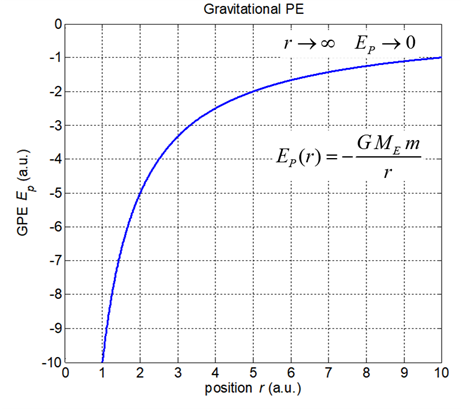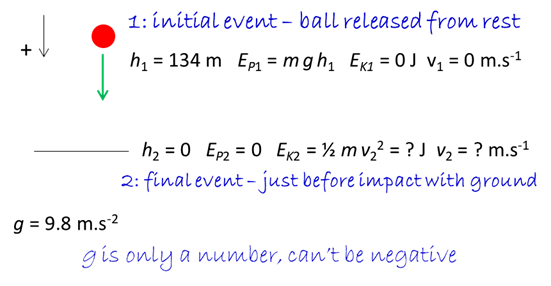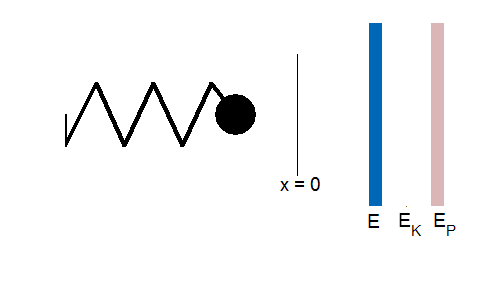MODULE 5
ADVANCED MECHANICS
GRAVITATIONAL POTENTIAL
ENERGY
|
Exercise using Figure 3 How much energy (work) is required
by an applied force to move an object of mass m from r = 1.0 a.u.
to r = 5.0 a.u. r = 1.0 a.u.
to r = An object is released from rest at a
point where r = 5.0 a.u.
Describe the subsequent motion of the object. When r = 1.0 a.u.,
what will be the value of its kinetic energy? How would the values change if the
mass of the object was 2m ? |
|
Conservation of energy Consider an object in motion that is
acted upon only by the gravitational force. Then in the system of the Earth
and the object, the total energy of the system is conserved. Hence, as the
object moves, the change in total energy is zero. Kinetic
energy of the object, EK Gravitational
potential energy of system (GPE), EP Total
energy of system, E
= EK + EP gain
in KE = loss in GPE or loss in KE = gain in GPE |
|
Consider the flight of a cricket
ball in the air. In flight the ball is only acted upon by the gravitational
force. The ball initially has its maximum value for its KE and a minimum
value for GPE. As the ball rises its potential energy increases at the same
rate as its kinetic energy decreases. When the ball reaches its maximum
height, its potential energy is a maximum and its kinetic energy a minimum
(KE = 0). As the fall falls its potential energy decreases at the same rate
as its kinetic energy increases. gain in KE = loss in
GPE or loss in KE = gain in GPE Consider a cricket ball dropped from
a tower. The ball falls vertically a distance of 134 m from rest before
hitting the ground. What is the velocity of the ball immediately before
hitting the ground? Solution How to
approach the problem (Identify
Setup Execute Evaluate) Draw an
annotated diagram Type of
problem: conservation of energy Knowledge: total energy E = EK + EP = constant gain in KE = loss in
GPE or loss in KE = gain in GPE
Total
energy E
= E1 = E2 EK1
+ EP1 = EK2
+ EP2 0 + mgh1
= mv22
+ 0 v2 = + 51 m.s-1 |
|
To visualise how energy is stored, watch
the animation of a vibrating object attached to a spring. The total energy of
the system remains constant but the there is a continual transfer between the
stored energy of the spring (elastic potential energy) and the kinetic energy
of the oscillating object.
|
|
Ian Cooper School of Physics University of Sydney If you have any feedback, comments,
suggestions or corrections please email Ian Cooper ian.cooper@sydney.edu.au |










